Please email us or call us at 501049, 515036 if you need further assistance through the important process of finding the correct generator for your application.
Having a generator on hand can make life a whole lot easier in the event of a power outage caused by a natural disaster or system problem. For those who require electricity for medical reasons, it can be life-saving. While a portable generator will not power your entire house, it can provide enough electricity to make life bearable, and even comfortable, until power is restored.
Part 1 : Running a Generator
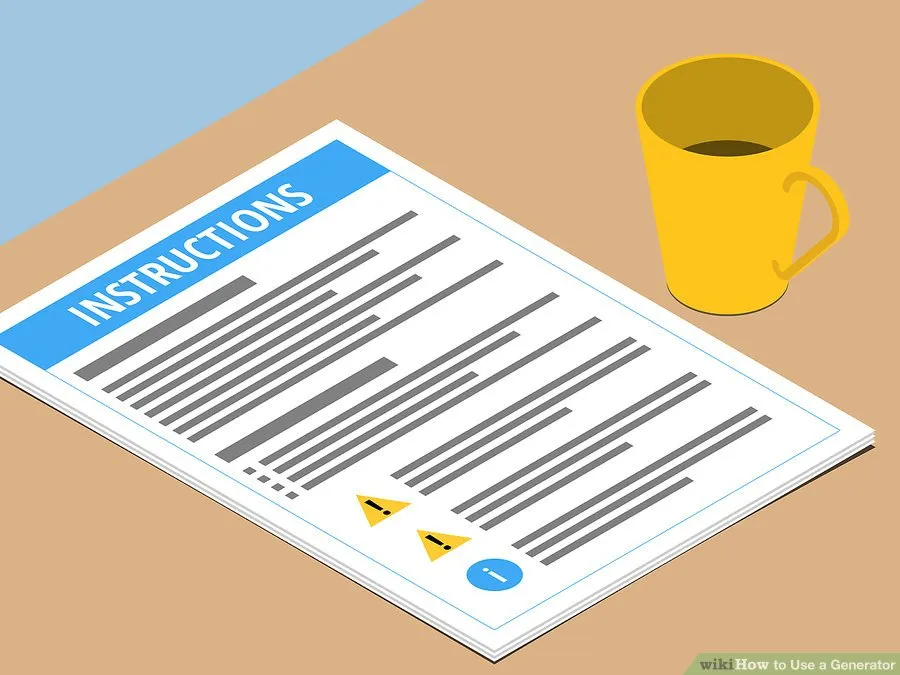
1. Read the manufacturer’s instructions.
If you have never used your generator before, or if you haven’t used it in a long time, it is critical to read all instructions and safety information provided with the generator. Before attempting to start the generator, take a few minutes to read over the information provided by the manufacturer so that you understand how to safely operate the machine.
- Consider storing safety information with the generator so that it is easy to find when you need it in a hurry.
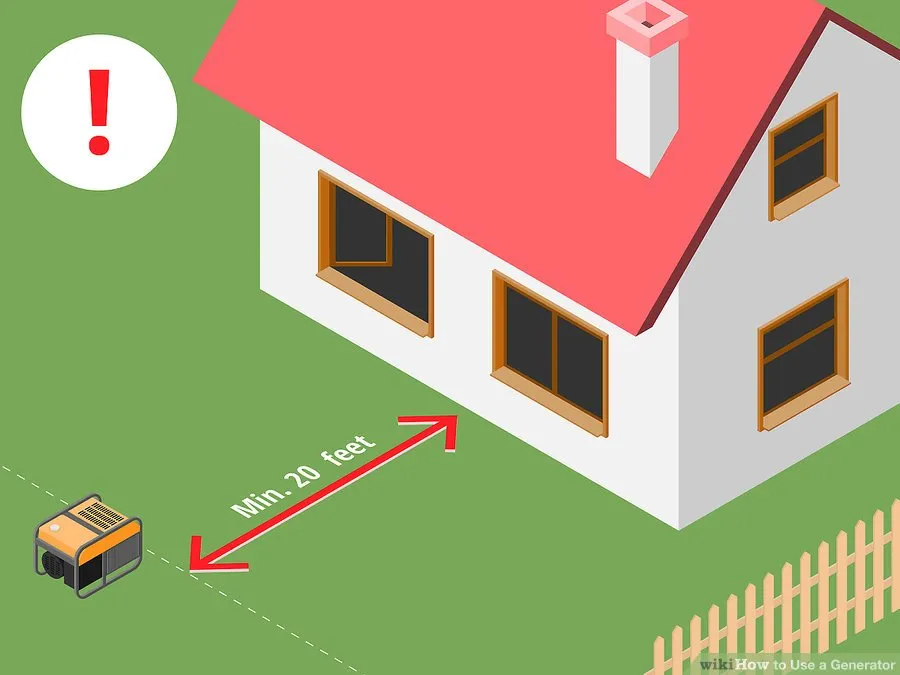
2. Set the generator in a proper place.
Generators can get hot and noisy, and produce dangerous fumes. Keep the generator outdoors, in a dry location, at least 3 feet away from anything else, and at least 20 feet away from any open doors and windows.
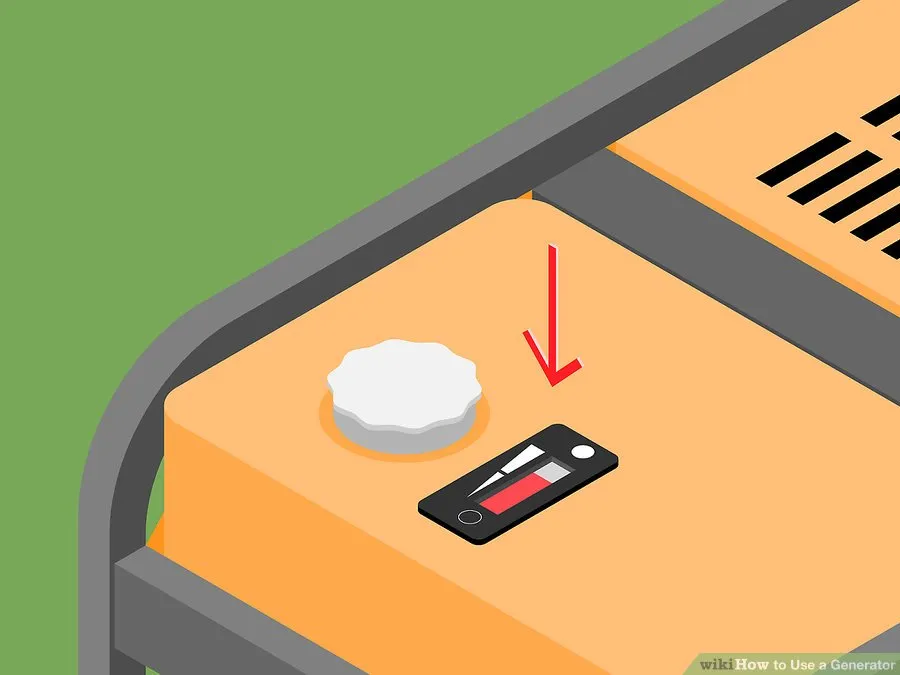
3. Check the fuel level.
Your generator should have some sort of fuel gauge. Make sure that the generator’s fuel tank is adequately filled before starting the machine. Add more of the appropriate fuel, if necessary.

4. Check the generator’s oil level.
Generators need oil to lubricate their running parts. Following your generator’s manufacturer’s instructions, check the oil level of your generator before starting it up. Add more oil (using only the type specified by the manufacturer), if necessary.

5. Inspect the generator’s air filter.
Your portable generator takes in air as part of the combustion process it runs to produce power. The filter traps dirt and debris, to ensure that the air the generator takes in is pure. You must inspect the filter before starting the generator. If it is dirty or clogged, clean or replace it according to the manufacturer’s instructions.
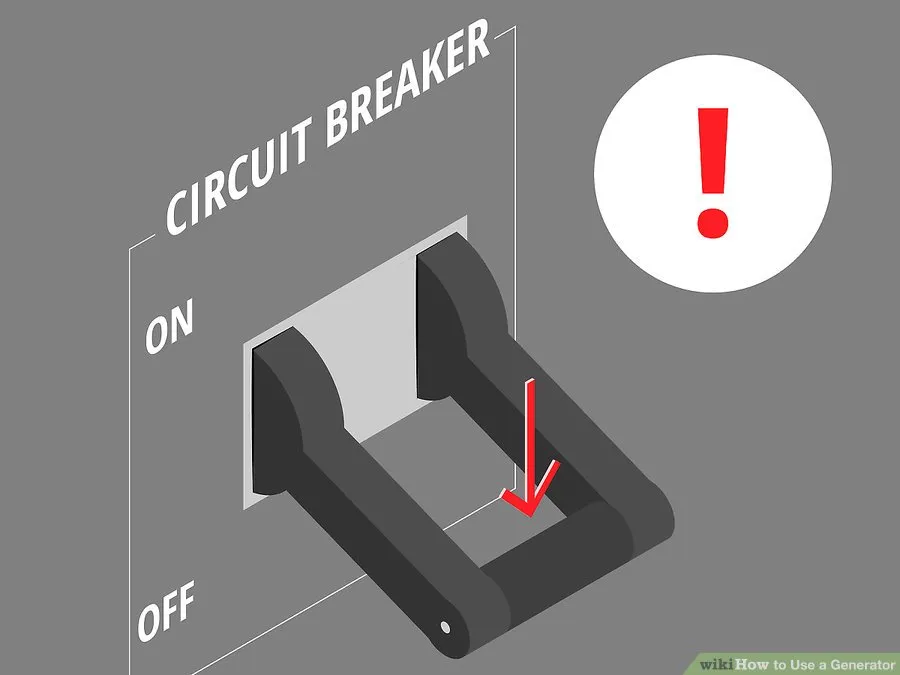
6. Flip the circuit breaker off.
Your generator will have a switch that controls when it puts out power. Make sure that it is safely in the “OFF” position before starting the generator.

7. Turn on the fuel valve.
This control determines when fuel flows to the generator’s engine. The generator needs the fuel in order to run and produce power, but you should not flip the fuel valve on until you are ready to start the generator.
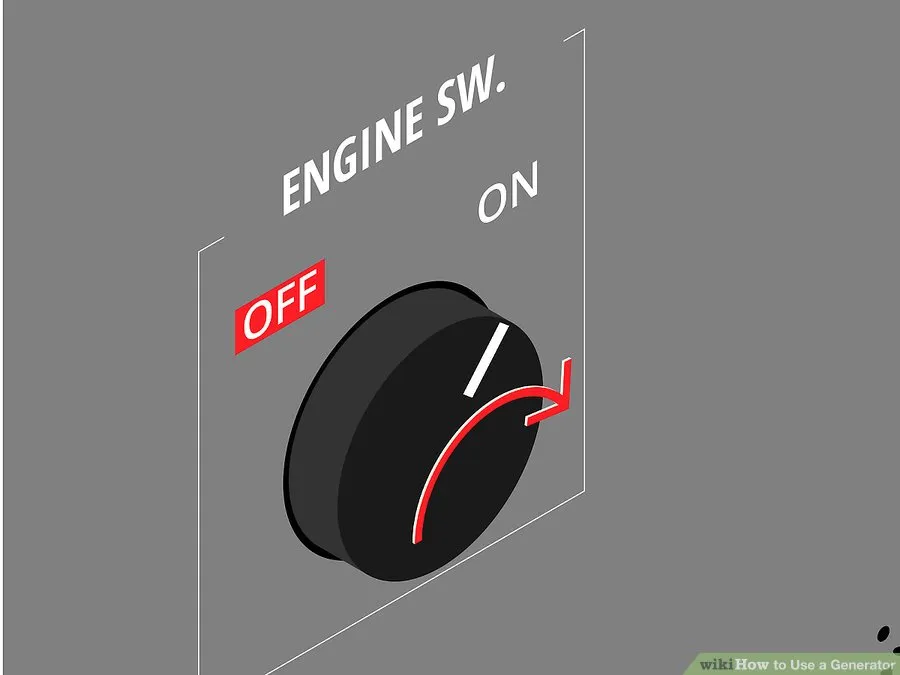
8. Start the generator.
Using your generator’s “START” switch or key, power the machine up. You should let the generator warm up and run for several minutes before switching the circuit breaker to the “ON” position (check your generator’s instructions to see exactly how long it should warm up).
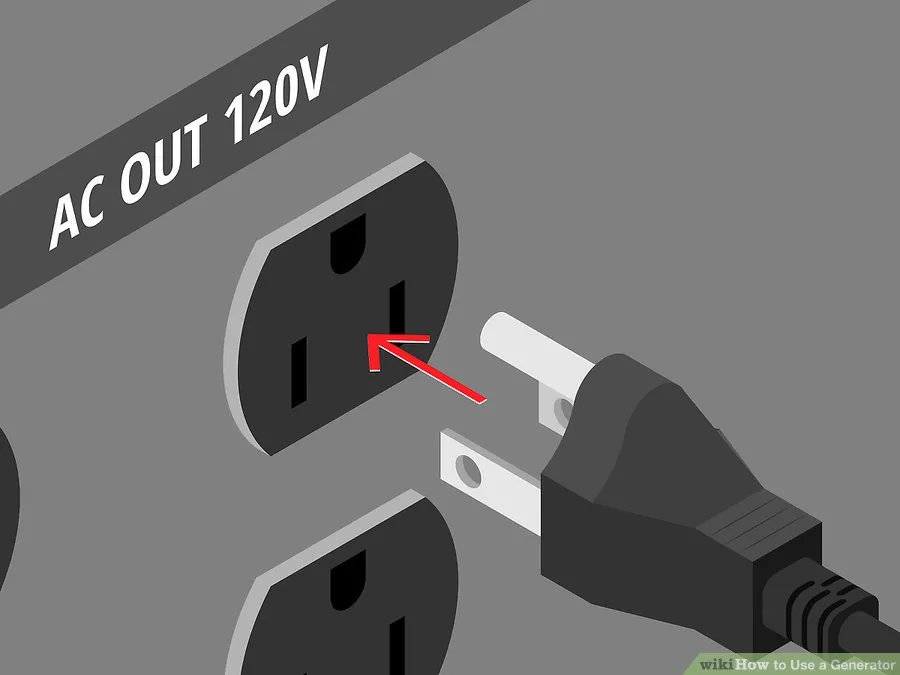
9. Connect your devices.
Many generators allow you to plug electronic devices directly into the generator. You may also use an approved extension cord. Choose one that is heavy-duty, outdoor-rated, and has a grounding pin.

10. Turn the generator off.
When you no longer need the generator’s power, or when you need to refuel the generator, you should turn the machine off. First, flip the circuit breaker to the “OFF” position. Then, turn off the machine using the generator’s power switch or key. Finally, set the generator’s fuel valve to the “OFF” position.
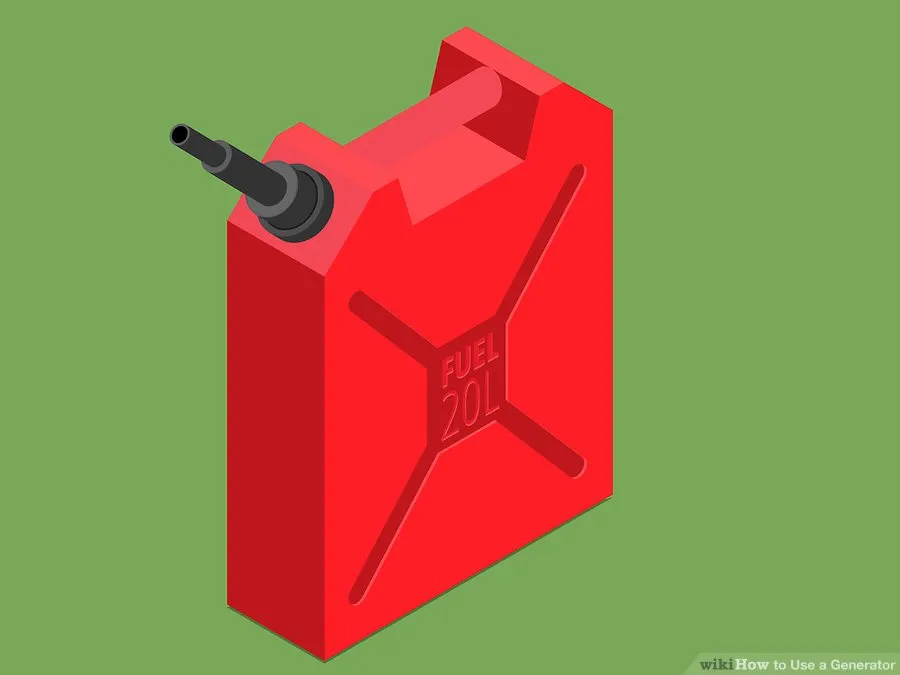
11. Keep an adequate supply of fuel for your needs.
The amount of fuel you can store may be limited by laws, regulations, safety considerations, and storage space. Try to keep enough around to power the generator for as long as you need it.
- Check the manufacturer’s instructions for tips on how long your generator will run on each tank of fuel. This can give you a sense of how much fuel to keep on hand.
- Use only the type of fuel recommended by the generator’s manufacturer. Using an inappropriate fuel can be dangerous, and can void the generator’s warranty.
- Common fuels used for portable generators include gasoline and kerosene.
12. Turn the generator off and let it cool before refueling it.
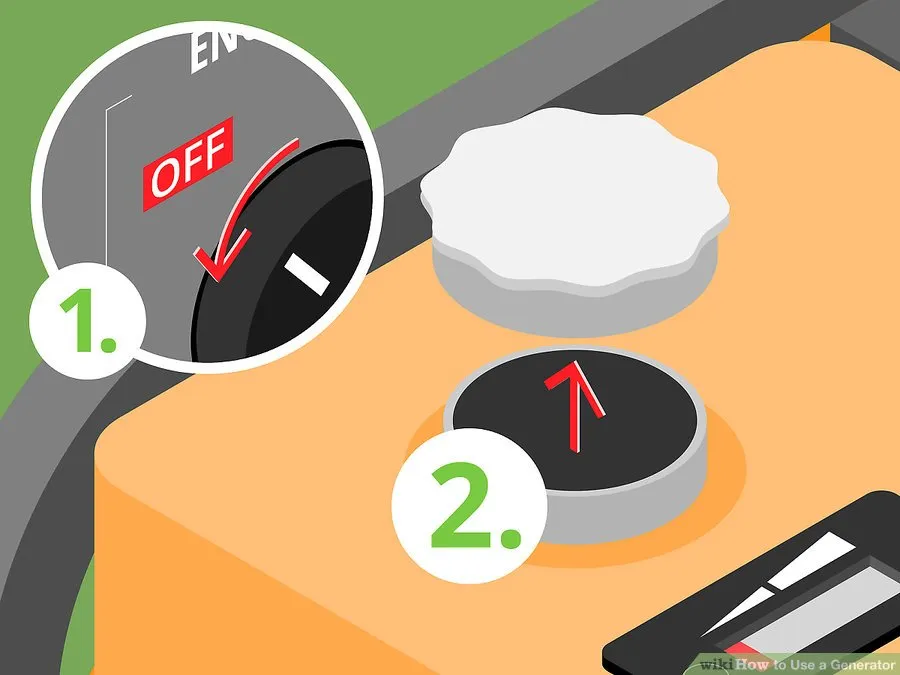
While it can be inconvenient to turn off your source of power when you most need it, trying to refuel a hot generator can be dangerous. Turn the machine off and wait 15 minutes to refuel. You can minimize the inconvenience by scheduling a refuel of the generator at an off-peak time, such as when your family is asleep.
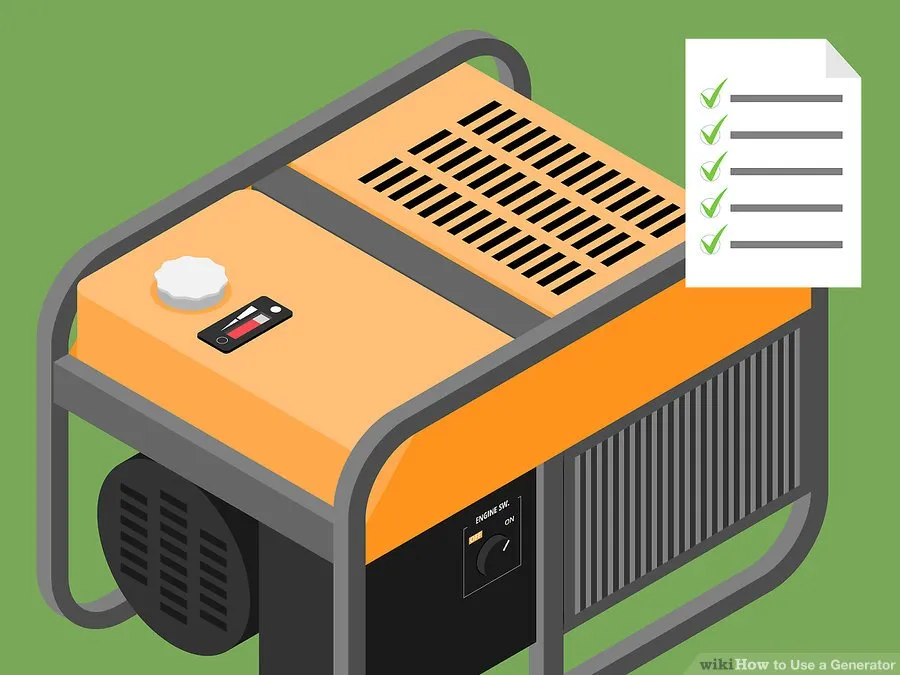
13. Inspect your generator regularly.
It is important to keep your generator in good working order. Since it may sit unused for long periods of time, you should schedule regular inspections (at least once per year). Make sure that all the parts are clean and that there is fresh fuel in the tank.
- Store the generator according to the manufacturer’s instructions.
- Run the generator for a short time about once a month to make sure that everything is working properly, and that the machine’s parts stay lubricated.
Part 2 : Following Safety Recommendations
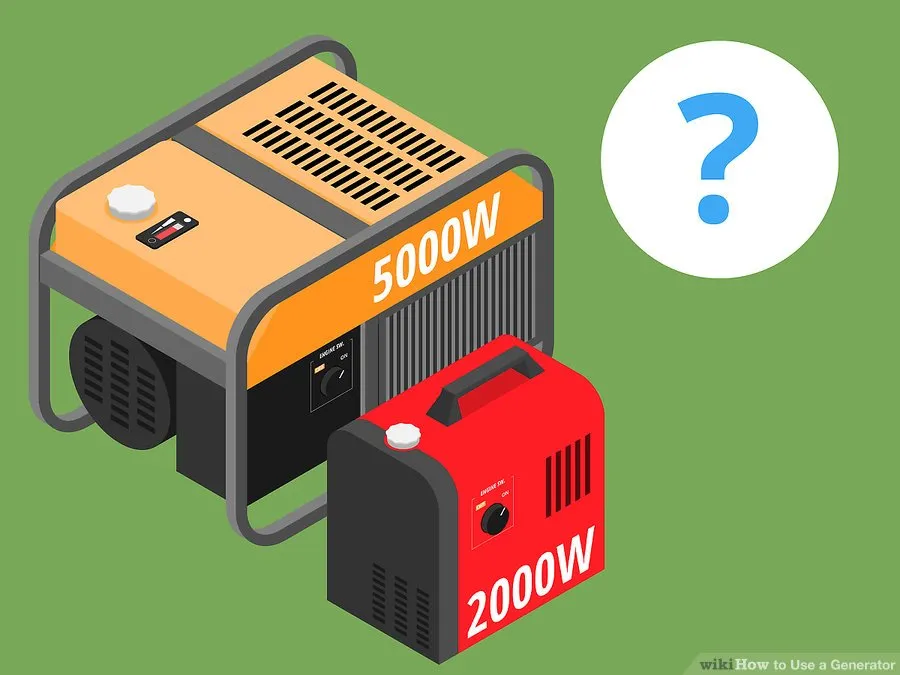
1. Buy the right generator.
If you are shopping for a generator, get one that will supply the amount of power you will need. Labels and other information provided by the manufacturer should help you determine this.[19] You can also ask an electrician for assistance. If you connect devices that use more power than the generator can produce, you run the risk of damaging either the generator or the devices.
- If you have a relatively small furnace and city water, you can probably power most household appliances with between 3000 and 5000 watts. If your home has a larger furnace and/or a well pump, you can expect to probably need a generator that produces 5000 to 65000 watts.
- Some manufacturers have a wattage calculator to help you determine your needs.
- Generators approved by Underwriter’s Laboratories (UL) or Factory Mutual (FM) have undergone rigorous inspections and safety tests, and can be trusted.
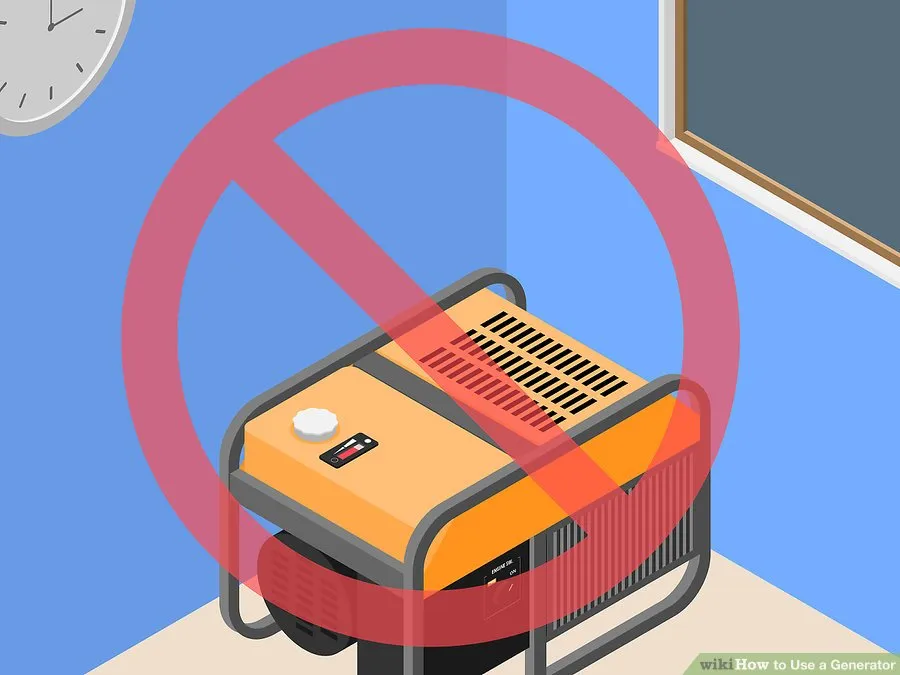
2. Never use a portable generator indoors.
Portable generators can produce deadly fumes and carbon monoxide. When these become trapped in enclosed or partially-ventilated spaces, they can build up and cause illness and even death. Enclosed spaces can include not only rooms inside your house, but also a garage, basement, crawl space, etc. Carbon monoxide is odorless and colorless, so even if you don’t see or smell any fumes, you may be in danger if you use the portable generator indoors.
- If you feel dizzy, sick, or weak when using a generator, get away immediately and seek fresh air.
- Keep your generator at least 20 feet away from any open windows or doors, as fumes can enter your home through these.
- You can install portable, battery-operated carbon monoxide detectors in your home. These work much like a smoke or fire alarm, and are a good idea to have at any time, but especially when you are using a generator. Inspect these regularly to make sure they are working and have fresh batteries.
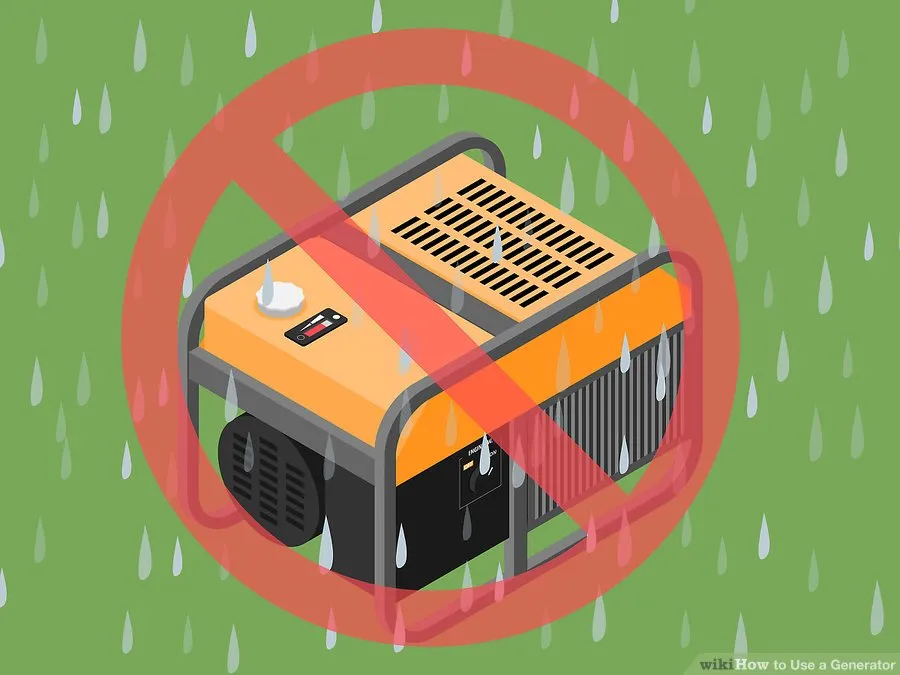
3. Never operate a generator in rainy or wet conditions.
Generators produce electricity, and electricity and water make a potentially deadly combination. Set your generator on a dry, level surface. Keeping it under a canopy or other covered area can protect it from moisture, but the area must be open on all sides and well-ventilated.
- Never touch a generator with wet hands.
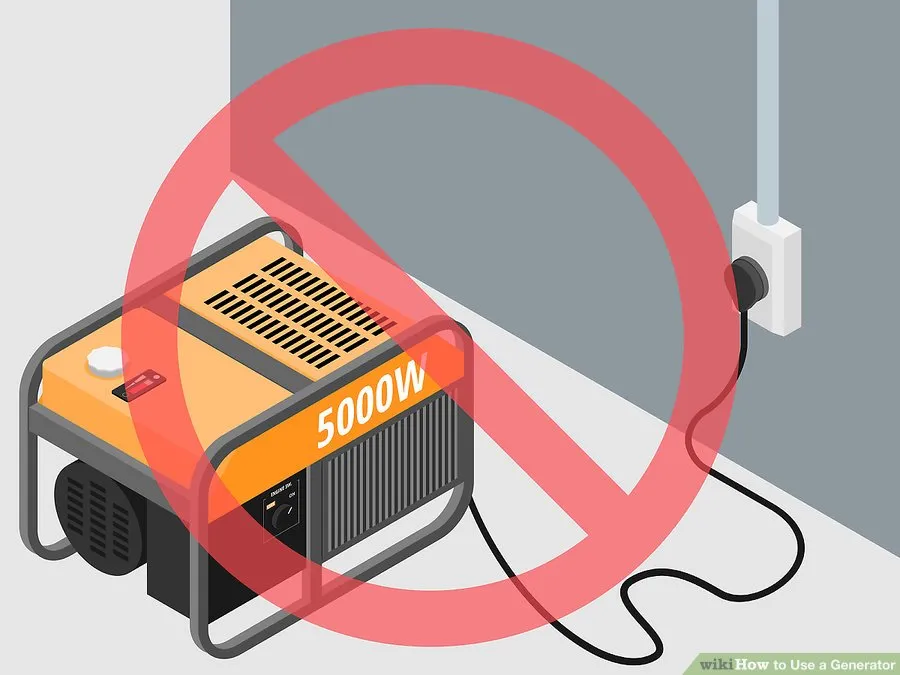
4. Never plug a portable generator directly into a wall outlet.
This is an extremely dangerous process known as “backfeeding,” since it runs power back into the grid. It can harm you, electrical workers trying to repair a system during an outage, and your home.
- If you want to have backup power connected directly to your home, you must have a licensed electrician install a power transfer switch and a stationary generator.
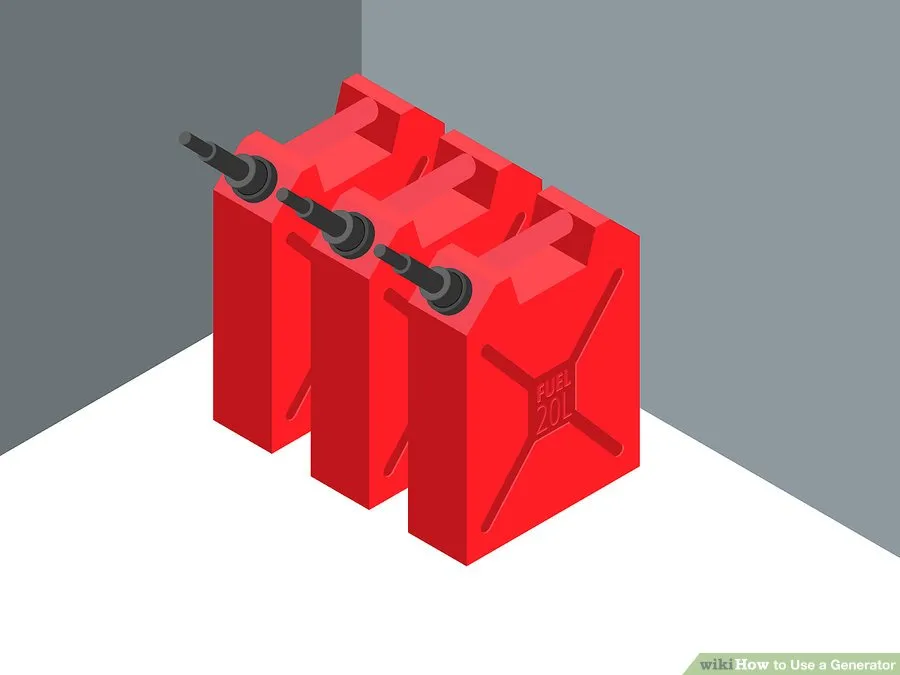
5. Store the generator’s fuel properly.
Use only approved fuel containers, and store the fuel according to the manufacturer’s instructions. Usually, this means in a cool, dry place, away from your home, flammable material, and other fuel sources.
